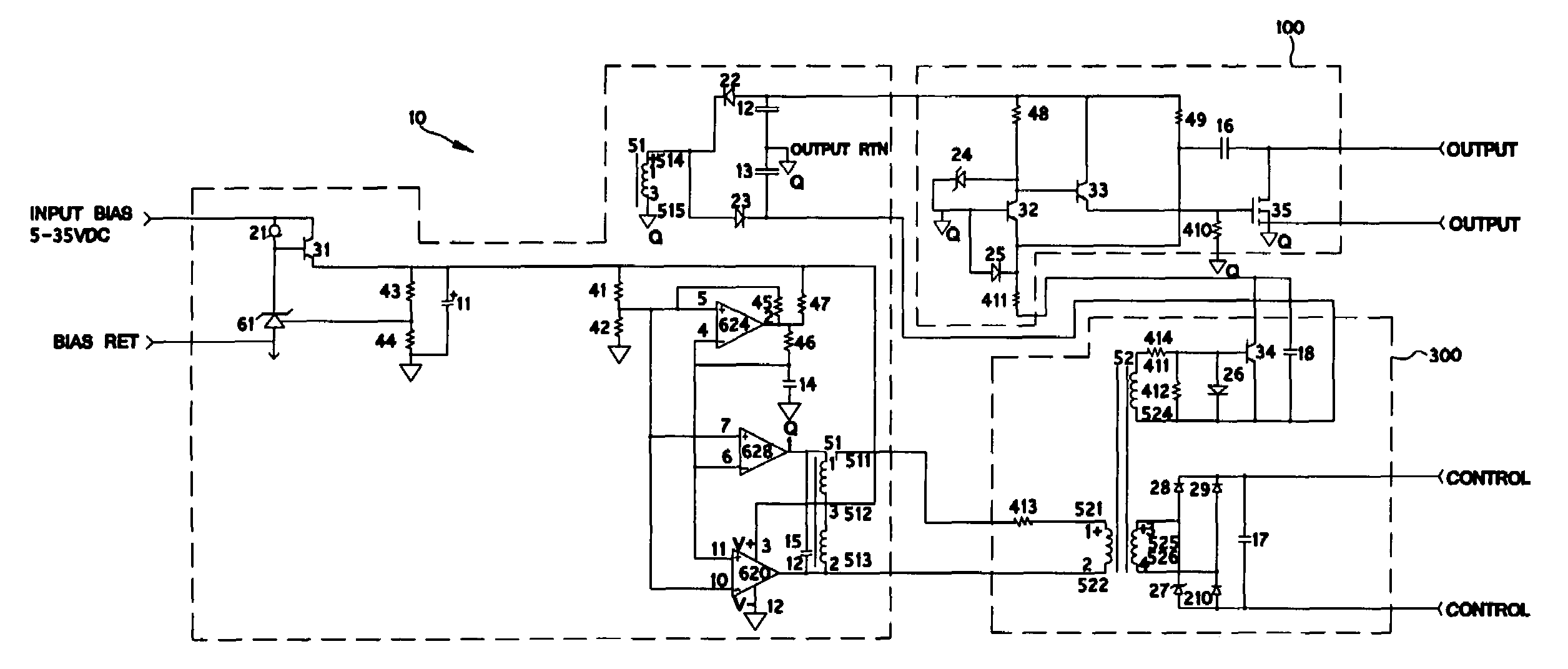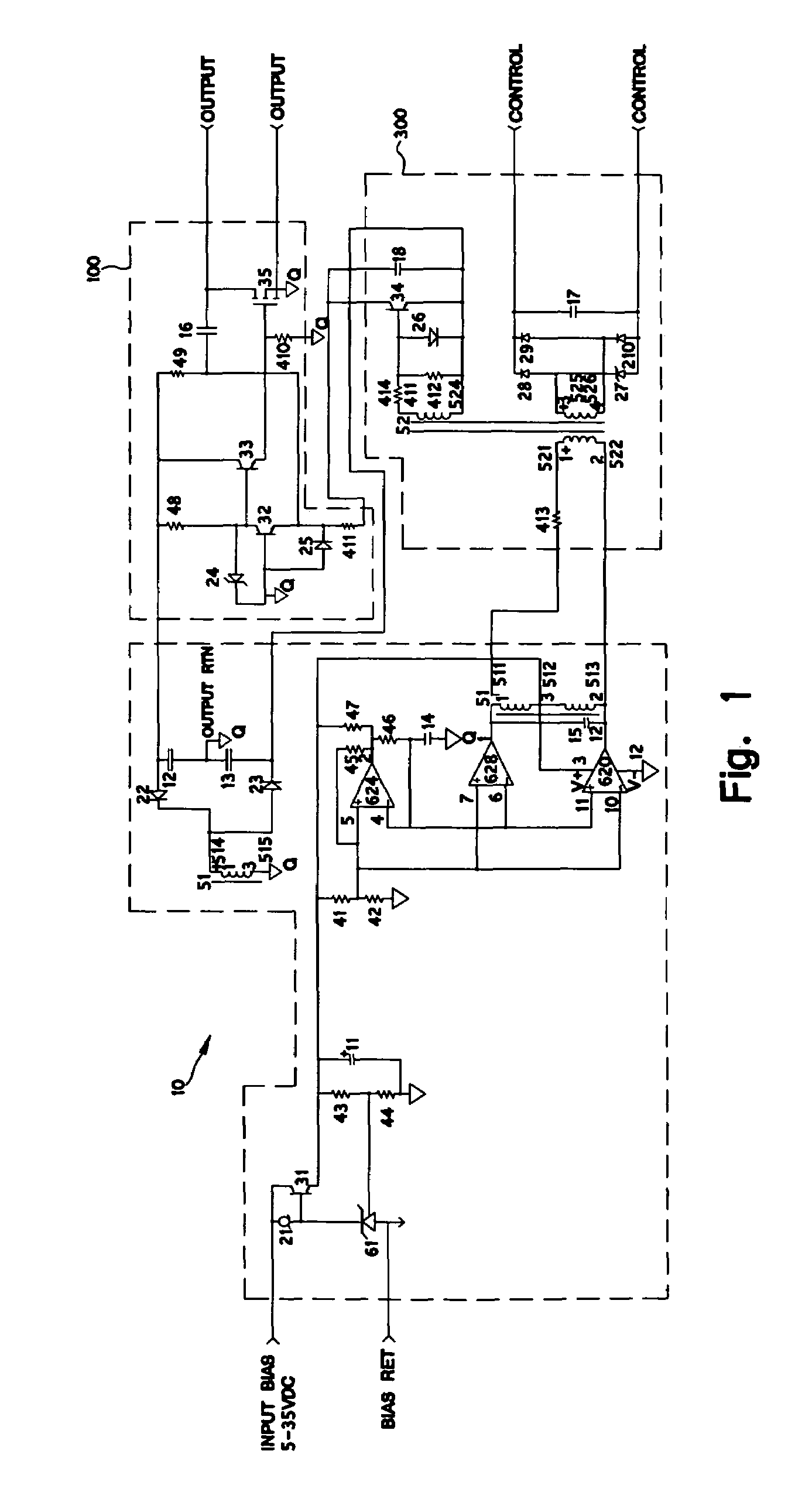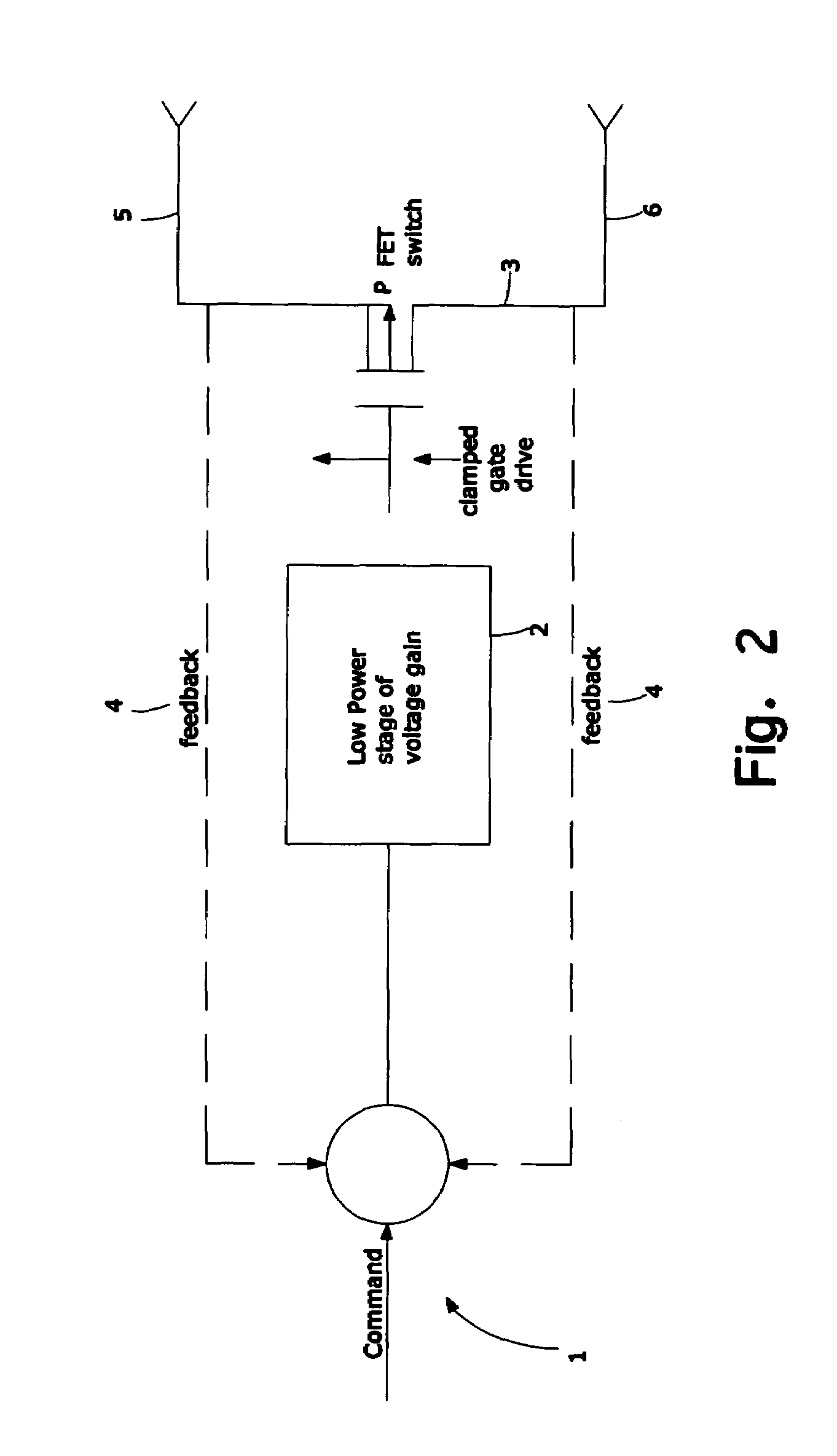Radiation tolerant solid-state relay
a solid-state relay, radiation-tolerant technology, applied in the direction of electrical equipment, electronic switching, pulse technique, etc., can solve the problems of large variation in current from the source to the drain, limited sources of supply, and the effect of large gate voltage signal, high radiation dose, and large signal magnitud
- Summary
- Abstract
- Description
- Claims
- Application Information
AI Technical Summary
Benefits of technology
Problems solved by technology
Method used
Image
Examples
Embodiment Construction
[0019]In accordance with a preferred embodiment of the present invention, the gate drive signal should be high enough to saturate the drain to source channel. It should not, however, be so high that the gate to source breakdown voltage rating of the FET is exceeded. Preferably, the FET operates close to its maximum gate voltage signal. Higher signals can handle higher radiation levels, allowing the FET to function across a larger range of radiation exposure.
[0020]FIG. 1 is a schematic diagram of a radiation-tolerant solid-state relay generally indicated by reference numeral 10 in accordance with a preferred embodiment of the present invention. This circuit example operates from a voltage source 102 to 50 VDC, but nominally 28 VDC. It may, however, be readily scaled for different bus voltages.
[0021]The circuit 10 includes three galvanically isolated sections, the bias section 200, the control section 300 and the power switching section 100.
[0022]The bias section 200 provides transfor...
PUM
 Login to View More
Login to View More Abstract
Description
Claims
Application Information
 Login to View More
Login to View More - R&D
- Intellectual Property
- Life Sciences
- Materials
- Tech Scout
- Unparalleled Data Quality
- Higher Quality Content
- 60% Fewer Hallucinations
Browse by: Latest US Patents, China's latest patents, Technical Efficacy Thesaurus, Application Domain, Technology Topic, Popular Technical Reports.
© 2025 PatSnap. All rights reserved.Legal|Privacy policy|Modern Slavery Act Transparency Statement|Sitemap|About US| Contact US: help@patsnap.com



